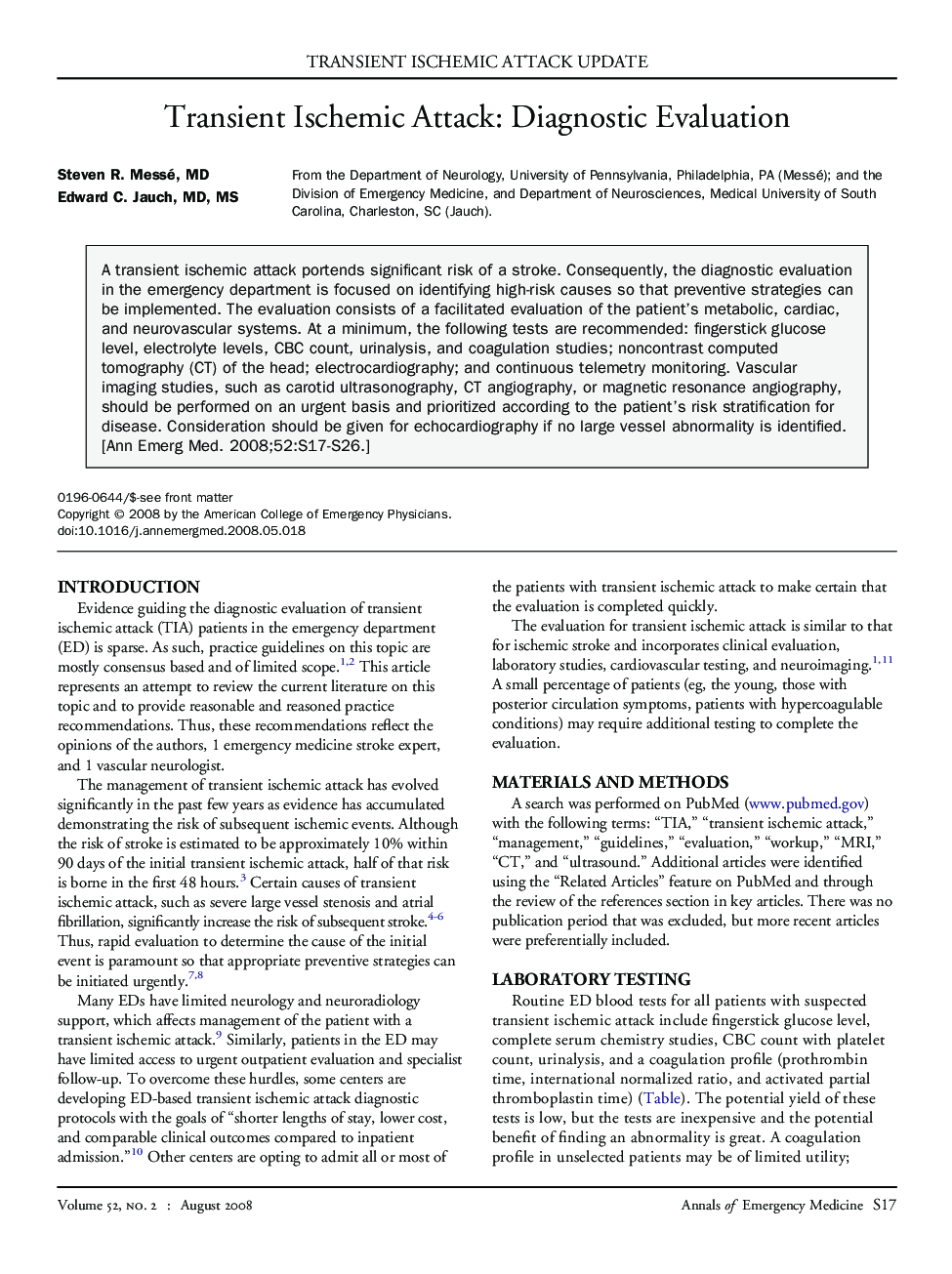| کد مقاله | کد نشریه | سال انتشار | مقاله انگلیسی | نسخه تمام متن |
|---|---|---|---|---|
| 3233137 | 1588609 | 2008 | 10 صفحه PDF | دانلود رایگان |

A transient ischemic attack portends significant risk of a stroke. Consequently, the diagnostic evaluation in the emergency department is focused on identifying high-risk causes so that preventive strategies can be implemented. The evaluation consists of a facilitated evaluation of the patient's metabolic, cardiac, and neurovascular systems. At a minimum, the following tests are recommended: fingerstick glucose level, electrolyte levels, CBC count, urinalysis, and coagulation studies; noncontrast computed tomography (CT) of the head; electrocardiography; and continuous telemetry monitoring. Vascular imaging studies, such as carotid ultrasonography, CT angiography, or magnetic resonance angiography, should be performed on an urgent basis and prioritized according to the patient's risk stratification for disease. Consideration should be given for echocardiography if no large vessel abnormality is identified.
Journal: Annals of Emergency Medicine - Volume 52, Issue 2, August 2008, Pages S17–S26